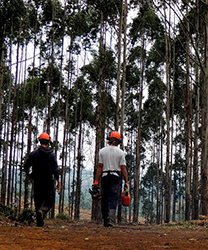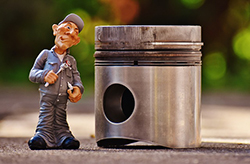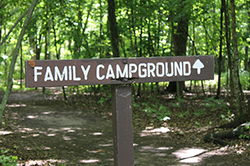 Your home-based business gives you flexibility and fulfillment. However, you’re responsible for any damages you cause and any accidents that occur because of your business activities. Without the right liability insurance, you risk losing your business, home and personal assets. Evaluate your liability insurance options as you protect yourself.
Your home-based business gives you flexibility and fulfillment. However, you’re responsible for any damages you cause and any accidents that occur because of your business activities. Without the right liability insurance, you risk losing your business, home and personal assets. Evaluate your liability insurance options as you protect yourself.
Examples of Home-Based Business Liabilities
Every day, you face general and professional liabilities your standard personal home insurance policy will not cover. Consider five scenarios.
- Accidents – A client trips down your stairs after her catering consultation and injures her ankle. Your homeowners insurance policy will not cover treatment for those injuries.
- Data – As an financial planner, you store sensitive information on your home computer that’s compromised by a hacker. Unfortunately, your homeowners insurance policy will not compensate you for any lost data or resulting damages.
- Damage you cause – You accidentally break an expensive antique vase while leaving a client’s home, or someone trips over your computer bag as you work at a local coffee shop. Your homeowners insurance will not cover your financial liability.
- Libel or Slander – A blog post you write contains inaccuracies about a local business leader, and she sues you for libel, or you share confidential information about a client at a networking event and are sued for slander. Any related expenses are your responsibility.
- Economic damage – The business report you write for a local company contains inaccuracies that cause the company economic damage. You are responsible for all associated financial costs.
- Negligence – You forget to include peanuts on your homemade cookie labels, and a customer has an allergic reaction. You could be sued and may have to pay any related expenses.
Home-Based Business Liability Insurance Options
To ensure your have the right liability coverage, first consider details about your home-based business. Its size, type, location and unique liability risk are all factors that determine which type and how much liability insurance coverage you need.
You are now ready to consider your liability insurance options.
- Homeowners Insurance Endorsement
Add an endorsement or rider to your existing homeowners insurance policy to cover your business assets. It typically provides $2,500 to $5,000 in coverage and generally costs less than $100 per year.
- Home Office Business Policy
Gain business liability coverage with a home office business insurance policy. It features protection against lawsuits from injuries, covers loss of records, and includes personal liability coverage.
- Business Owners Policy
A comprehensive Business Owners Policy or BOP covers numerous liabilities, including business data, on-premises and off-premises liability, and personal and advertising injury.
Protect your business, home and personal assets with the right liability insurance. Discuss your specific business with your insurance agent today as you ensure you have adequate coverage.

 Most businesses carry some type of commercial insurance that’s designed to cover their equipment. However, what you may not realize is that commercial insurance is not always helpful when it comes to covering all of your bills. If you own a logging business, you’ve likely spent a significant portion of your budget on logging equipment. Without logging equipment insurance, you may find yourself to be at a financial loss should something happen to it.
Most businesses carry some type of commercial insurance that’s designed to cover their equipment. However, what you may not realize is that commercial insurance is not always helpful when it comes to covering all of your bills. If you own a logging business, you’ve likely spent a significant portion of your budget on logging equipment. Without logging equipment insurance, you may find yourself to be at a financial loss should something happen to it. What is General Liability Insurance?
What is General Liability Insurance?  The Federal Emergency Management Agency (FEMA) reports that over 40 percent of businesses affected by a disaster do not reopen. Whether your business faces a natural, technological or human-caused disaster, you can get back to business quickly in several ways.
The Federal Emergency Management Agency (FEMA) reports that over 40 percent of businesses affected by a disaster do not reopen. Whether your business faces a natural, technological or human-caused disaster, you can get back to business quickly in several ways. Your small business insurance may cover data breaches, auto accidents and weather damage. To get reimbursed, though, you need to file a claim. Use these six steps to ensure your insurance claim is processed quickly and properly.
Your small business insurance may cover data breaches, auto accidents and weather damage. To get reimbursed, though, you need to file a claim. Use these six steps to ensure your insurance claim is processed quickly and properly. An engineer designs the site and grading plan for a construction project. After the project’s completion, the developer finds that the parking lot is not draining.
An engineer designs the site and grading plan for a construction project. After the project’s completion, the developer finds that the parking lot is not draining.
 The ISO Commercial General Liability Coverage Form can seem like a map that starts you out on a main road, takes you smack into a dead end, but offers you a right turn that you can take if you meet certain conditions. It begins with a broad promise and a hint that the promise isn’t quite that broad, then continues with a list of items that narrow that promise.
The ISO Commercial General Liability Coverage Form can seem like a map that starts you out on a main road, takes you smack into a dead end, but offers you a right turn that you can take if you meet certain conditions. It begins with a broad promise and a hint that the promise isn’t quite that broad, then continues with a list of items that narrow that promise. Norma is an assistant manager at a video store. After feeling very sick for a couple of days, she goes to the doctor and is diagnosed with strep throat. Since her employer provides sick time benefits, she calls the store manager and tells him she cannot work that day. He dismisses her illness as “just a sore throat” and orders her to report for work.
Norma is an assistant manager at a video store. After feeling very sick for a couple of days, she goes to the doctor and is diagnosed with strep throat. Since her employer provides sick time benefits, she calls the store manager and tells him she cannot work that day. He dismisses her illness as “just a sore throat” and orders her to report for work. As the owner of a campground, you have the responsibility to protect your campers, their guests and their property. Insurance for campgrounds gives you the protection you need.
As the owner of a campground, you have the responsibility to protect your campers, their guests and their property. Insurance for campgrounds gives you the protection you need. The risk management firm PMA Companies recently released a report, Six Steps to a Safer Workforce: Building Accountability as an Essential Element for Injury Prevention in the Healthcare Industry. According to the report, a safety program that includes top-management commitment, as well as accountability for safety at every level of the business, will help optimize productivity, keep employees safe and healthy, and reduce costs.
The risk management firm PMA Companies recently released a report, Six Steps to a Safer Workforce: Building Accountability as an Essential Element for Injury Prevention in the Healthcare Industry. According to the report, a safety program that includes top-management commitment, as well as accountability for safety at every level of the business, will help optimize productivity, keep employees safe and healthy, and reduce costs.



